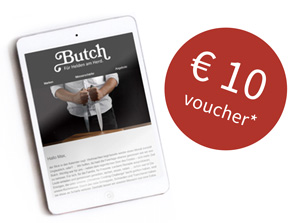Knife Sets - The Perfect Basic Equipment for Your Kitchen
A high-quality knife set is the heart of any kitchen and makes a crucial difference when cooking. What professionals have long known is being discovered by more and more hobby cooks: With precise, sharp knives, food preparation becomes not only more efficient but also more enjoyable. The right combination of different types of knives allows you to effortlessly cut, chop, fillet, and slice all ingredients – from crunchy vegetables to juicy roasts.
In our carefully curated selection of knife sets, you will find combinations for every need and cooking style. Whether you are a beginner setting up your first kitchen or an ambitious hobby cook looking to elevate your tools to a new level – you will find what you need here. The sets differ not only in the number of knives included but also in materials, types of sharpening, and design philosophies. From classic German knives with their robust versatility to elegant Japanese blades with their exceptional sharpness and precision, there is something for every taste.
Especially practical: Many of our knife sets come with a stylish knife block or a practical knife bag. This way, you always have your most important kitchen helpers at hand and safely stored. A well-assembled set covers all basic cutting tasks – from the universal chef's knife to the precise paring knife to the serrated bread knife. Discover the world of high-quality knife sets now and experience how much joy working with professional tools can bring!
What distinguishes premium knife sets?
Premium knife sets are characterized by precisely crafted blades made from high-quality steel alloys, well-thought-out handle designs, and a carefully considered selection of cutting tools. Key quality features include edge retention duration, material hardness, and craftsmanship precision. High-quality collections typically include a versatile chef's knife, a serrated bread knife, a compact paring knife, and a medium-sized utility knife. Professionally oriented sets often expand this repertoire with a traditional Santoku, a specialized carving knife, and a maintenance honing steel.
What price range is appropriate for a high-quality knife block?
A high-quality knife block with premium cutting tools is priced between 100 and 300 euros for ambitious home cooks. For professional sets, investments between 300 and 800 euros or more are to be expected. Pricing is significantly influenced by factors such as blade purity, steel composition used, manufacturing process, and the range of knives included. More crucial than the financial investment, however, is a well-considered selection of knife types that are optimally tailored to individual cooking requirements and habits.
Which cutting tools are truly necessary for a functional kitchen?
For a functionally equipped kitchen, three fundamental cutting tools are indispensable: A versatile chef's knife (20-25 cm blade length) as an all-rounder for most cutting tasks, a serrated bread knife (20-25 cm) for precise processing of baked goods without loss of structure, and a handy paring or vegetable knife (8-10 cm) for delicate detail work. A medium-sized utility knife (12-15 cm) serves as a practical addition for medium-scale cutting tasks. This strategic combination efficiently covers about 95% of all common kitchen tasks.
Which trio of knives should be in every kitchen?
The essential trio for every kitchen consists of: 1) A universal chef's knife as a multitasker for processing vegetables, meat, and herbs, 2) a serrated bread knife for structure-preserving slicing of baked goods without compression, and 3) a precise paring knife for detailed tasks such as peeling, fine carving, and preparing small ingredients. These three key tools form the foundation of any high-quality knife collection and therefore deserve special attention when selecting.
How do Japanese and German knife-making traditions differ?
Japanese and German knife-making traditions exhibit characteristic differences: Japanese cutting tools typically use higher hardness steel alloys (60-65 HRC), have steeper blade angles (15-17°), and are known for exceptional sharpness with increased sensitivity. German knife blades are based on slightly softer steel compositions (56-58 HRC), feature wider blade angles (20-22°), and impress with robustness at slightly lower edge sharpness. The choice depends on personal working style: For precise cuts in vegetables and fish, Japanese blades offer advantages, while German knives excel in versatility and durability.
How can the quality of high-quality knives be recognized?
High-quality knives reveal their quality through several characteristic features: 1) Blade alloy - noble steel composition with transparent indication of hardness (HRC rating), 2) Processing precision - full tang blade construction, flawless transitions between blade and handle, 3) Weight distribution - harmonious balance between handle and blade, 4) Handling - ergonomically shaped handle design for fatigue-free and safe working, 5) Consistent cutting performance - retains optimal sharpness even after intensive use. In knife sets, the well-thought-out composition of different blade types for various application scenarios also plays a crucial role.
What knife set is recommended for ambitious hobby cooks?
Ambitious hobby cooks benefit from a balanced knife collection with 4-6 premium cutting tools: A multifunctional chef's knife (20 cm), an Asian-inspired Santoku or utility knife (18 cm), a structure-preserving serrated bread knife (20 cm), a precise paring or vegetable knife (8-10 cm), and a flexible utility knife (12-15 cm) form a strategically thought-out basic equipment. A high-quality honing steel serves as a valuable addition for regular blade maintenance. Beginners are recommended knives of medium hardness class (56-58 HRC), which are characterized by ease of care and versatility without being overly sensitive.








